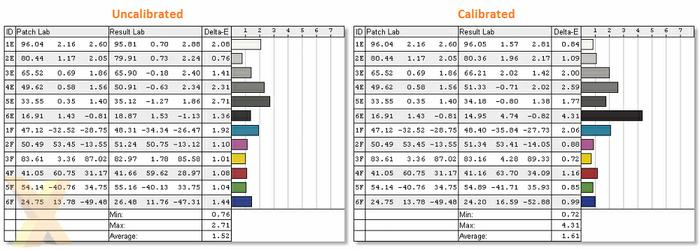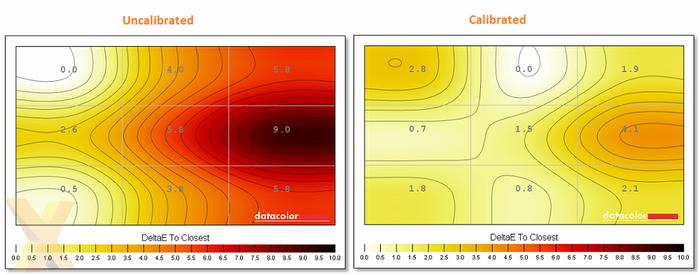Performance - Part I
Testing methodology
A monitor review based on descriptive visual analysis will always have the underlying problem of subjectivity; assessments of panel quality will vary from user to user depending on their normative expectations. To get around this we’re deploying Datacolor’s Spyder 4 Elite professional monitor analyser to return a quantitative assessment of display quality. We also make use of the Leo Bodnar video signal input lag tester which allows us to test the combined input latency of a specific monitor at the 1080p resolution with 60Hz operation only (a limitation of the testing equipment).
These numerical results, we feel, add extra utility to our reviews allowing us to more accurately benchmark the following display characteristics:
- Colour Gamut relative to sRGB and AdobeRGB industry-standards
- Brightness levels and contrast ratios
- Colour uniformity
- Brightness uniformity
- Colour accuracy
- Input latency
The tests are run under two different scenarios: uncalibrated and calibrated. Uncalibrated performance equates to the ‘out-of-the-box’ settings a monitor ships with; this is the typical end-user experience as very few consumers engage in calibration of their displays before use. Calibrated performance is what results after the monitor has been put through the Spyder4Elite hardware-calibration process with the following parameters: 2.2 Gamma, 6500k colour temperature and 120 nits of brightness. These calibrated results demonstrate what the monitor is capable of when tuned correctly but the results have limited relevance to most consumers who will not calibrate their monitors.
Colour
Our testing revealed something of a rarity - Philips' claims about 99 per cent AdobeRGB and 100 per cent sRGB were absolutely spot-on.
Colour accuracy was similarly impressive with an average Delta-E of 1.52 out of the box, and after using our own calibration tool performance actually decreased. Most users should find the monitor is accurate enough from the factory thanks to the calibration Philips conduct and the company also provides a user-calibration tool with the SmartControl software package that we'll detail a little later.
Panel uniformity was a little on the disappointing side out of the box so end-users may want to calibrate the display simply on the basis that it seemed to dramatically improve colour uniformity. There is also a fairly consistent relationship between brightness and colour uniformity, as brightness decreases the colour tends to become more uniform.












